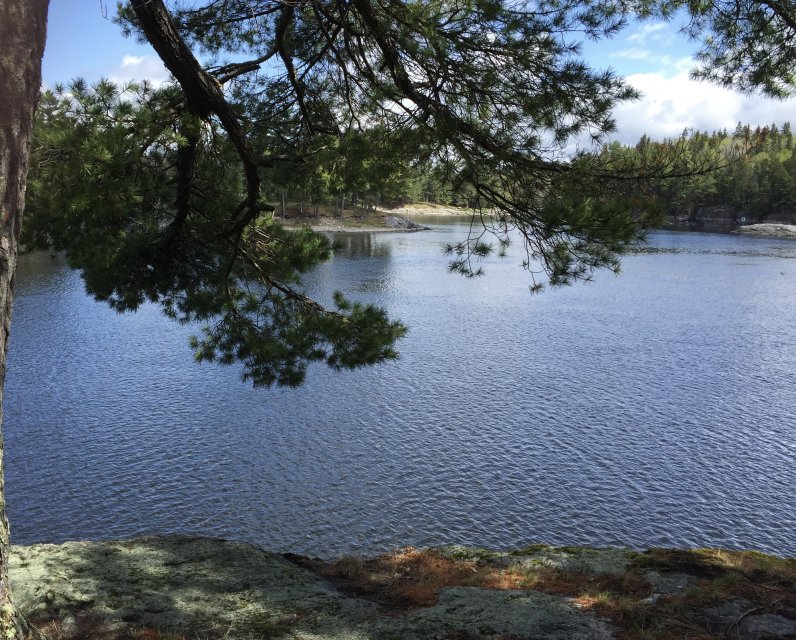Unpublished Opinions
Union educator, folk music lover, peacemaker, facilitator, hiker, cyclist. Committed to learning about Indigenous issues where I live and doing my part to move towards reconciliation.
An open letter to the Prime Minister - from one neighbour to another

It's not too late for the federal government to do the right thing with this important sacred site in the nation's capital. It's not too late to return it to Algonquin and Indigenous ownership as a true gesture of reconciliation.
Dear Prime Minister,
You and I are neighbours. We both live near the south shore of the Ottawa River, in the watershed that is the unceded territory of the Algonquins and other Indigenous peoples.
We have found ourselves living here in the early days of reconciliation. Though you and I have never talked, I believe we share a commitment to reconciliation. You, as the leader of our country and responsible for finding a way forward in so many arenas – UNDRIP, land claims, water, services to Indigenous communities, implementing the recommendations of the Truth and Reconciliation Commission. Me, as a descendent of settlers, learning about the Indigenous history and issues of the places where I’ve lived. And responsible, like you, for finding a way forward in my own world.
We have a chance to do something historic in our neighbourhood.
There is a sacred Indigenous site just upriver from where you live and work. It’s called Akikodjiwan in Algonquin. People here know of it as the Chaudiere Falls and Islands. It was not that long ago – 1800 – that Philemon Wright, a member of a small group of settlers from Massachusetts, chopped down the first tree there. So began the site’s short industrial history. For thousands of years before that, it was a sacred site to Indigenous people. The Anishiinaabeg call it Akikpautik, the Creator’s First Sacred Pipe. For centuries, it was a stopping place on Canada’s major highway – the canoe route from the St. Lawrence to the west. In 1613, Samuel Champlain wrote about his Anishiinaabeg guides performing ceremony there as he passed by. Philemon Wright saw Indigenous people hunting in the area and operating a sugar bush.
As settlers moved in, they were supported by colonial policies and institutions that barred Indigenous people from their traditional use of the site. Mills and factories polluted the land, and a dam was built to power the industry -- blocking the flow of the river into the Creator’s First Sacred Pipe. In spite of the desecration of the site, the late Algonquin elder William Commanda referred to the site as sacred, based on oral history that had come to him from his ancestors.
Maybe you’ve heard what’s happening now - Akikodjiwan is currently the focus of an important dispute between a real estate developer, Algonquins and others who are calling on the federal government to stop the development. The NCC’s master plan included the return of the site to Indigenous people until very recently. The decision to move away from that plan and to sell the site off to the condo developer was made by the previous government, behind closed doors, and without consultation with Indigenous people – the announcement came as a complete surprise to everyone who had been waiting and hoping for the implemention of elder William Commanda’s vision.
This won’t be an easy one.
Indigenous territory was divided by colonial provincial borders, and even the Algonquin people have been divided by the developer’s classic “divide and conquer strategy. The developer has lined up support for their development, with promises of inclusion in decision making, jobs and economic opportunity. These are worthy and important goals for Indigenous leaders to pursue and I share these aspirations.
But there are many who are not optimistic that these promises will materialize -- especially now that the mega-developer Dream Unlimited has announced (in a Nov. 14 news release) that they have taken over as lead developer from the local “green developer” Windmill.
You have received letters from Algonquin chiefs calling on you to stop the development, and calling for the creation of an Indigenous National Park and Cultural Park and Historic Commemoration Site. Currently, there is a House of Commons petition sponsored by Romeo Saganash that is asking that the development be stopped. It’s waiting for your response.
This puts settlers like you and I in a difficult position. But here’s what you could do:
Urgently:
- Stop the transfer of crown land to the developer. As far as we know, the Crown still controls more than 14% of the lands. And the developer is still in the middle of a five year lease with Domtar, the most recent industrial user of the site.
- Consider carefully how to respond to Romeo Saganash’s petition that is currently before the House. The petition demonstrates that people across the country are watching to see what we do on this issue here in our neighbourhood.
Less urgently:
- Create space for an open and inclusive conversation about what’s possible on the site. That will mean space and resources for Indigenous peoples to have the conversations they need to have, among themselves and then with my federal government at the table, hosting but not directing, and guided by a vision for reconciliation. It is not appropriate for a developer to be at the table until government and the representatives of all the relevant stakeholders have decided what to do with the land.
Imagine what our neighbourhood could look like.
Chaudiere Falls restored to what it was before colonialization and industrialization. The islands a forested meeting place for Indigenous people and settlers. All in view of -- and with a view of -- Parliament Hill and other national institutions. A true symbol of change and reconciliation.
Sounds like a legacy for both of us.
Respectfully,
Cathy Remus, Ottawa



Comments
Be the first to comment